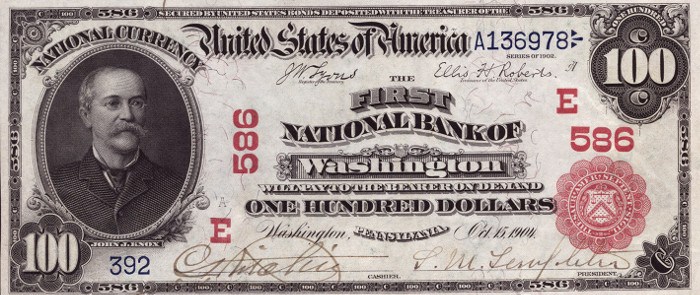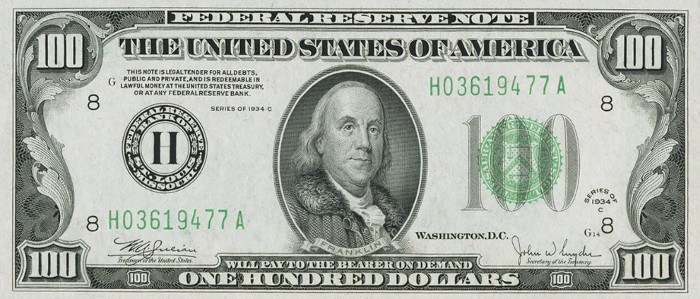There are different series of the one hundred dollar bill. The large 100 dollar bills were first issued in 1863 and they are more valuable. The small 100 dollar bills were issued from 1929 to the present date.
Most of the small bills have star note varieties. If your bill has a star either before or after the serial number then it's going to sell for a higher price.
Let's now take a look at the different types of bills and what their current values are.
Large Bills

The large $100 bills are either interest bearing notes, legal tender notes, compound interest Treasury notes, National Bank notes, National Gold Bank notes, silver certificates, Treasury notes, gold certificates, or Federal Reserve notes.
Most series are worth at least $650 in very good condition. The earliest series will sell for more money. The 1914 series $100 bills with the blue seal are worth less money.
Small Bills

The small $100 bills are either National Bank notes, gold certificates, legal tender notes, or Federal Reserve notes. The legal tender notes have a red seal, and the Federal Reserve notes have a green seal.
The earlier notes will sell for a premium above face value in very fine condition. Most other notes will only sell for a premium in extremely fine condition or uncirculated condition. Star notes will sell for the highest prices.
See the list below for detailed values on several of the old small type bills:
- 1928 100 Dollar Bill
- 1929 100 Dollar Bill
- 1934 100 Dollar Bill
- 1950 100 Dollar Bill
- 1963 100 Dollar Bill
- 1966 100 Dollar Bill
- 1969 100 Dollar Bill
- 1974 100 Dollar Bill
Grading System
Very good- A circulated note that has considerable wear to it. There might be one or two tears on the edge of the note. The note may be discolored, dark in appearance, or limp.
Very fine- A note that has been in circulation but not for a long time. The note is still relatively crisp. There may be some creases, folds, or light smudges.
Extremely fine- A note that shows small signs of having been in circulation. The note will be bright and it will have almost all of its original crispness. There might be one or two minor creases or folds but there are no stains, discolorations, or tears.
MS 63 choice uncirculated- A note that shows no signs of ever having been in circulation. The note still has its original crispness. The note is also well-centered.
Sources:
A Guide Book of United States Paper Money
